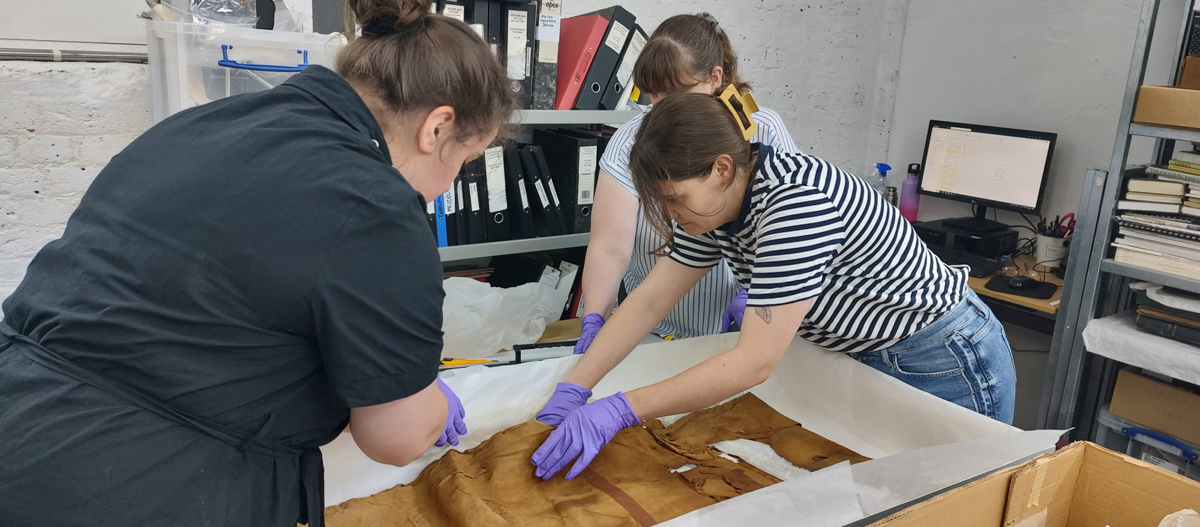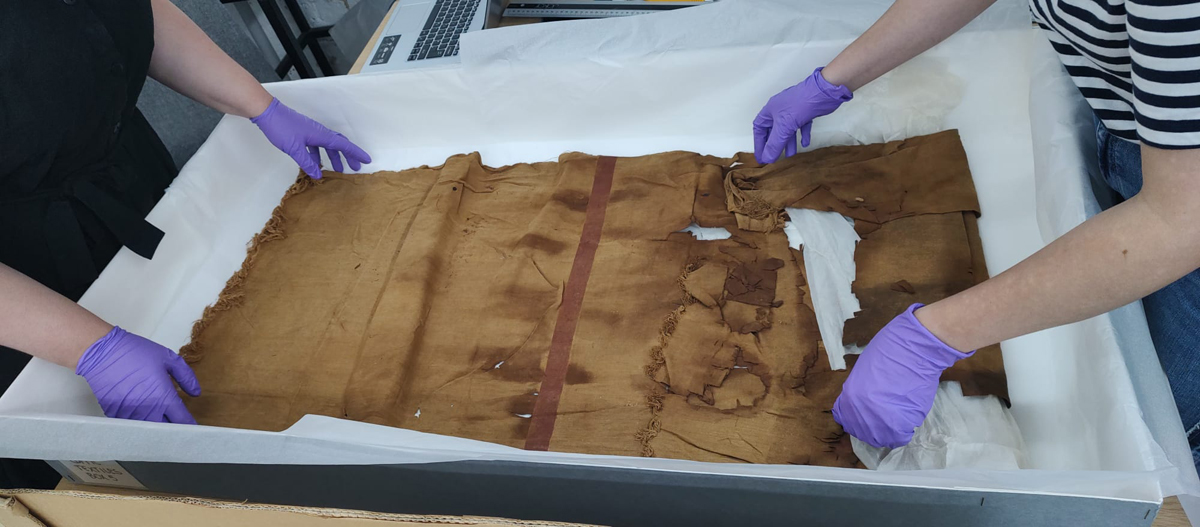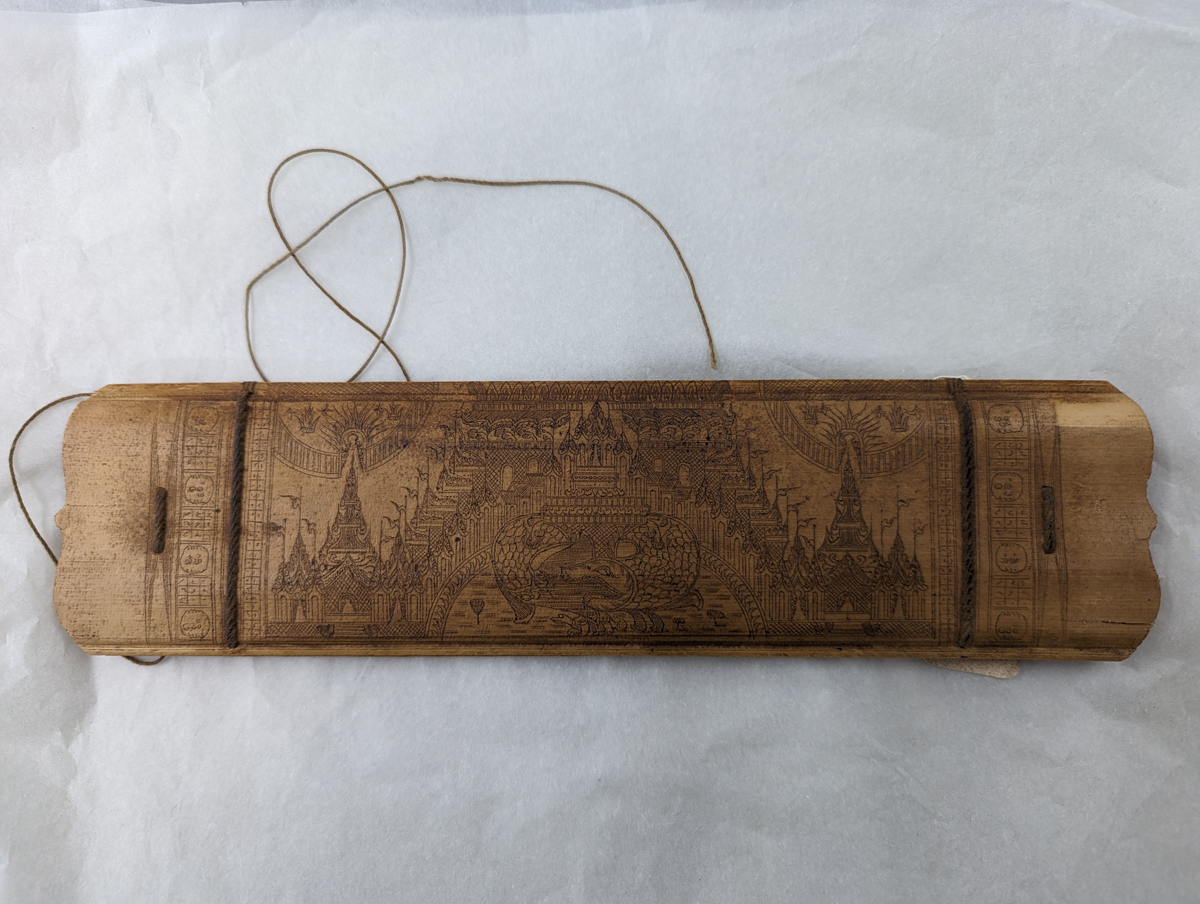Behind the Scenes with World Art: Repacking Textiles
In May 2024, the World Art collections team started a project to repack, condition check and photograph some of our textile collection which was housed in the store at Brighton Museum.

Issues with mould were identified in the textiles store, which houses the Costume collection as well as a significant portion of the World Art textiles. Collections stores across the country have seen an increase in mould issues due to changes in climate. A project was proposed to employ conservators at Zenzie Tinker Conservation to condition check and repack the textiles ready to be moved to off-site storage where the rest of the World Art collection is housed.

An initial audit of the World Art textiles was undertaken to understand how many textiles we have in the store. Conservators were invited to assess the collection before submitting a proposal and costs. The project started on the 8th May 2024, and consisted of condition checking, cleaning, measuring, sewing in labels and photographing the textiles. They were then repacked in more suitable boxes for the size of the textile, along with new acid free tissue to replace the ageing tissue which was inside the boxes.

Throughout this process, the World Art team have been improving the documentation of the textiles. They have been updating object records, creating and linking acquisition records, linking relevant objects together and linking photographs. This work on the documentation is crucial to the ongoing care of the collection, and has been undertaken with a desire to implement decolonising strategies within collections management. For example, textiles collected in Africa have historically been stored in ‘Africa Textile’ boxes, and so the team have been repacking the textiles into boxes broken down geographically by country (eg. ‘Nigeria Textile’ boxes). The team have also worked tirelessly behind the scenes to make space for the textiles at our off-site storage, ready for their arrival once repacked.

The majority of the World Art textiles are now beautifully packed and stored at our off-site storage, with images, condition ratings and comments, and vastly improved documentation. This is a huge step forward in our overall plan to improve the storage and cataloguing of the World Art collection. By working on smaller finite parts of the collection such as the textiles, it allows us to achieve vital collections work in a measurable and quantifiable way. Thankfully we have identified a number of textiles that are in need of further conservation treatment, particularly mould cleaning, before they were too damaged.

There is still a lot to do, a lot of work needs to be done to ensure all of the information captured throughout this project is catalogued on our content management system. Improvements needed to the storage of the textiles off-site include building new racking and bespoke Tyvek housing to further protect the textiles from pest activity, but it has been a real achievement to complete this project.

Throughout the project we have been finding some wonderful objects from all over the world. These include a manuscript made from palm leaf and a hat made of bamboo, split cane, hair and wood, associated with the Naga cultural group from Burma (Myanmar) and collected in the 1920s. Beautiful Chinese robes depicting butterflies and dragons were a particular highlight, but most exciting were some incredible and extremely fragile Coptic textiles, from both the World Art and Archaeology collections. ‘Coptic Textiles’ is the term generally used for a class of decorated textiles from the 4th – 13th centuries CE, discovered in Egypt in a good state of preservation due to the hot, dry climate of that country.
